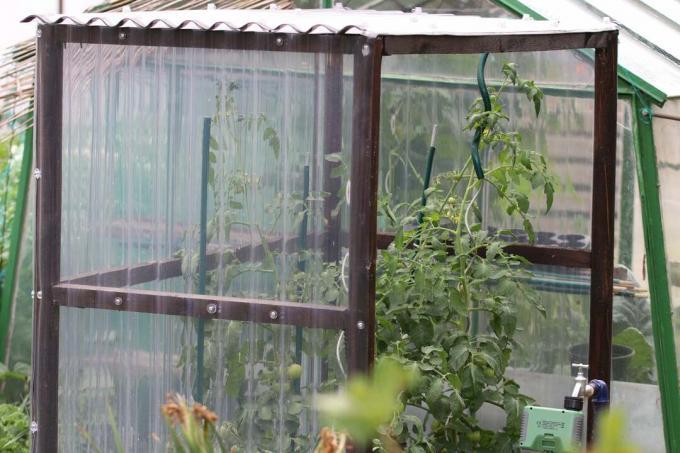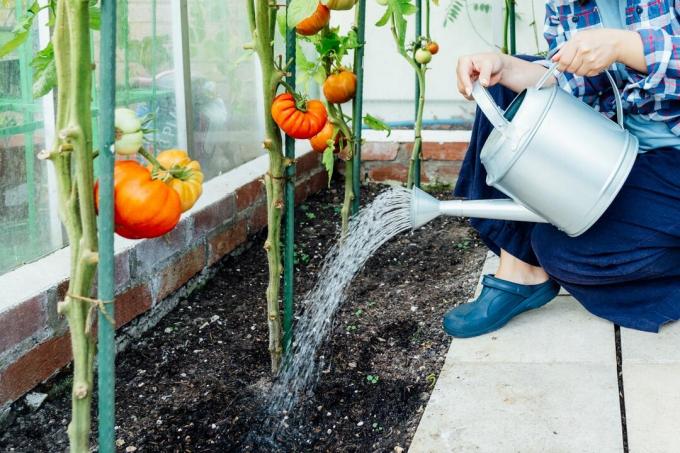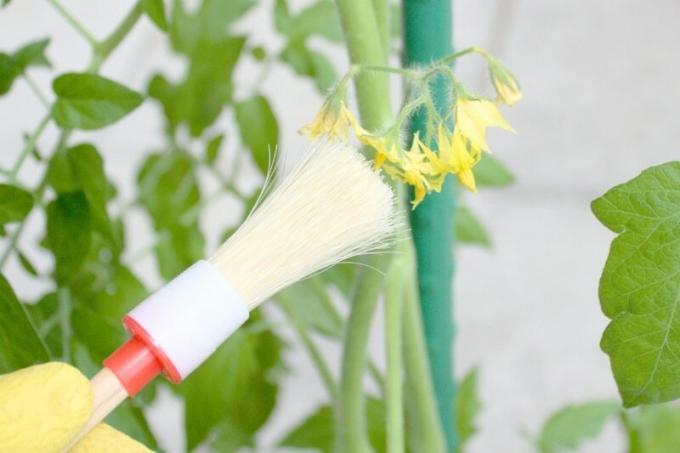
In Germany, tomatoes are grown in a wide variety of shapes, colors and flavors. This requires optimal conditions. But what if the plants flower but the tomatoes don't bear fruit?
In a nutshell
- responsible for a variety of causes
- ensure optimal conditions at the site
- do not plant out too early
- Avoid mistakes when fertilizing and watering
- help with pollination manually
Table of contents
- causes and remedy
- Unfavorable site conditions
- Planted out too early
- Mistakes in fertilizing
- Inadequate water supply
- Lack of pollination
- disease or pest infestation
- frequently asked Questions
causes and remedy
If your tomatoes are flowering but not growing fruit, there can be a number of reasons. We have looked at the most common causes of fruit failure and give tips on how to react correctly.
Unfavorable site conditions
The location plays a central role in tomato cultivation, especially protection from moisture and the interplay between light and heat. Intense sunlight, heat and drought can lead to the flowers drying up and fruit formation not occurring. Permanent moisture can also cause great damage to plants and fruits. So what should you pay attention to?

- outdoors semi-shady place optimal
- protect against rain, storm and hail
- shelter or space in front of the house wall recommended for potted plants
- protect from extreme heat in midsummer
- in the greenhouse ensure good air circulation
- Shade the roof if necessary
A notice: Temperatures above 30 degrees are bad for fruiting.
Planted out too early
Transplanting tomato plants too early can cause shock. The tomatoes will flower later, but will not produce any fruit. It is all the more important to gradually get used to the new environmental conditions. Here's how to do it correctly:
- Put them out during the day in the first two weeks of May
- by the hour in a sheltered place outdoors
- Gradually increase duration
- do not expose to direct sunlight
- clear again at night
- ensure constant watering during this time
- after the ice saints (mid-May) permanently outdoors

Tip: You can already see this error at the sowing do if you sow before the soil has reached a temperature of at least ten degrees.
Mistakes in fertilizing
If no fruit grows, although the tomatoes are flowering, over-fertilization, especially with nitrogen, which is responsible for leaf growth, can also be the cause. An excess of nitrogen is reflected in many new leaves. These are soft, pale and curl up. So what can you do?
- Stop fertilizing immediately
- wait for plants to recover
- allow excess fertilizer to be washed away by rain
- Mulch the soil with straw
- absorbs nitrogen
Inadequate water supply
Tomato plants need a comparatively large amount of water. If they are too dry, the leaves droop, curl up and begin to wither. If nothing is done, the loss of flowers and fruits or the entire plant will inevitably occur. As long as the leaves aren't completely wilted, this problem can be easily remedied.

- water affected plants abundantly
- remove dried leaves
- Dip specimens in buckets
- allow excess water to drain well
- Adapt future watering to the weather
- more common on hot days
- In general, water potted plants more frequently
When the leaves of tomato plants dry up, i.e. curl up and wither, this does not necessarily have to be due to a lack of water. Also a sunburn, cold damage, nutrient deficiency or Diseases can cause corresponding symptoms.
Tip: In order to make watering easier and to ensure a good water supply in the long term, it is advisable to use a high Put a flower pot or a 20-30 cm long plastic tube in the soil right next to the plant and water it daily to fill up.
Lack of pollination

No fruit without pollination, although tomatoes are actually self-fertile and do not need insects for pollination, the wind is sufficient. However, this is usually missing in greenhouses. Here the plants are protected from wind and insects. To remedy the situation, you may have to do it yourself to transport the pollen from one flower to the other. You can do this as follows:
- Gently shake blooming tomato plants
- or brush over pollen sacs and stigmas with a soft brush
- Repeat the process for several days in a row
- best time early in the morning between nine and ten o'clock
- before pollen often still sticky
- later in the day scar too dry
In addition to manual pollination, the greenhouse can be used to plant nasturtiums, peppermint, catnip, thyme, lavender, lemon balm or lungwort to attract insects. This increases the likelihood that the tomatoes will not only flower, but actually grow fruit.
Tip: One humidity more than 70 percent in the greenhouse can cause the pollen to clump together, which greatly impairs fertilization or makes it impossible.
disease or pest infestation
Parasites such as B. Nematodes or fungi (tomato wilt or Late blight and late blight) can infect the plants and lead to the death of the flowers and thus no fruit. Affected plants usually have to be discarded. As a preventative measure, crop rotation or Cultivation break of four to five years can be observed.
frequently asked Questions
That depends on the tomato variety and temperature down. Early varieties take 55 to 70 days from fertilization to maturity. For late ones it can be up to 90 days. The larger the fruit, the longer it takes to ripen.
That depends on whether fertilization has taken place or not. Flowers that remain unfertilized die. In the field, every flower usually becomes a fruit, provided the conditions are right.
Tomato leaves should never touch the ground, otherwise there is a risk of late blight infection. The regular removal of a few leaves also improves ventilation, the leaves can dry off quickly after rain. However, you should never remove too many leaves at once.



